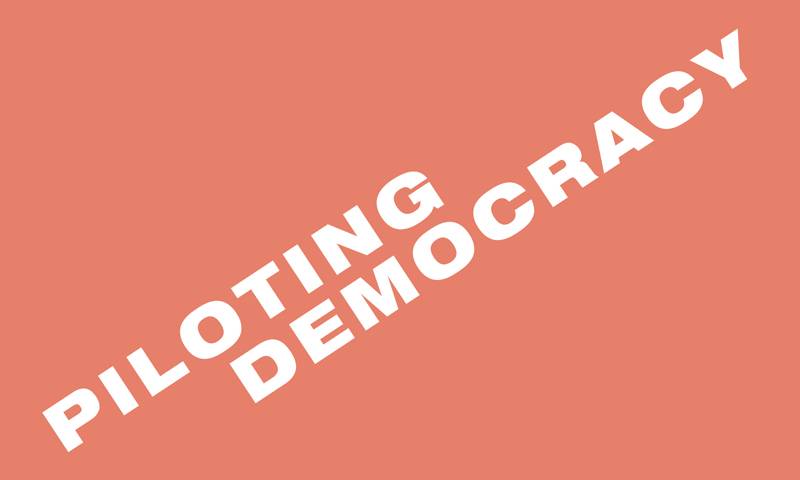Drones can do a lot more than deliver the shopping. How about making urban planning a more democratic process?
 Essay 04: Flora Roumpani
Essay 04: Flora Roumpani

Centre for Advanced Spatial Analysis
Last year, Amazon pushed forward with its plans for drone deliveries by delivering its first two packages to customers by drone. The drones successfully carried the packages over the Cambridgeshire countryside in a process described by Amazon as “just 13 minutes from mouse-click to delivery”.
The delivery of goods has made drone technology popular for use in public service. The consumer drone market has skyrocketed in the last couple of years, prompting the US Federal Aviation Administration (1) to make publicly available guidelines and regulations for using ‘Unmanned Aerial Vehicles’ for commercial purposes. Drones in the form of ‘quads’ and ‘hexacopters’ are now cheap to buy, versatile and mechanically simple, making the technology accessible to multiple sectors.
“The expansion of the use of drones signifies a new city infrastructure”
The expansion of the use of drones signifies a new city infrastructure. Operators fly beyond the line of sight in rural and suburban areas and, because drones can sense and capture the environment as they fly, they have unleashed a wave of predictions about their role in the future of city planning and architecture. Much of this role is accomplished by a generic mainstream tool: the camera.
Aerial imagery has been in the toolkits of cartographers and planners for years. However, putting an “imagery capture set” in the hands of the public raises the prospect of a more engaged planning process. Drones can now be programmed to follow accurately designed paths, avoid obstacles and reach non-accessible areas to perform surveys that would previously require expertise and months of work to complete. To quote Jordan Petersen ASLA, founder and CEO of Lift Aerial Marketing LLC: “UAV imagery can help bridge the gap between two-dimensional, temporally-devoid satellite imagery and the more prosaic ground-based conventional camera.” (2)
The mass distribution of drones enables wide access to captured urban data and, in combination with traditional forms of planning participation, it heralds a truly open planning system. Groups like Spatial Collective and Zoom Advocacy Organization in Nairobi, Kenya, already use these techniques to engage people with unmapped areas and reveal potential risks in uncoordinated planning, creating awareness and seeking solutions to challenges facing the residents of the city's shanty towns.
But perhaps a more powerful use of mapping drones is their role in rendering 3D outputs – models that people can see, touch and feel. Currently, images taken from drones can be used in combination with freely distributed applications, such as Trinio or Recap 360, to produce highly-detailed 3D models of captured objects and, by extension, entire areas.
Projects such as 2013’s RemapLima (3), a joint mapping expedition between The Bartlett’s Development Planning Unit and CASA, used images taken from a generic camera placed on an Ebee (a fixed-winged drone) to create a near real-time model of two areas in Lima, Peru. The team climbed the hills of Lima to fly the drones and captured overlapping photos for each area to create high-resolution point clouds. These were then sent to London to be digitally reconstructed and 3D printed. The result was two installations: a physical 3D printed model and an interactive digital 3D platform, built for community planning purposes and augmented with different layers of digital planning data gathered throughout the expedition.
Such drone outputs can be used as the basemap for the development of models and applications that have the capacity to help the public better understand complex problems relating to the urban environment and evoke more informed feedback. As greater public participation is increasingly seen as essential to successful planning, built environment professionals working in both developed and developing countries need to embrace drones as a way to broaden the discussion and drive more inclusive planning.
Footnotes
- see faa.gov/uas
- “Drones will elevate urban design” in The Dirt (blog of the American Society of Landscape Architects) at dirt.asla.org/2015/03/10/drones-will-redefine-the-image-of-the-city
- see remaplima.blogspot.co.uk
Flora Roumpani holds an MRes in Advanced Spatial Analysis and Visualisation from CASA and is currently a PhD student researching modeling smart cities. @en_topia
 Close
Close

